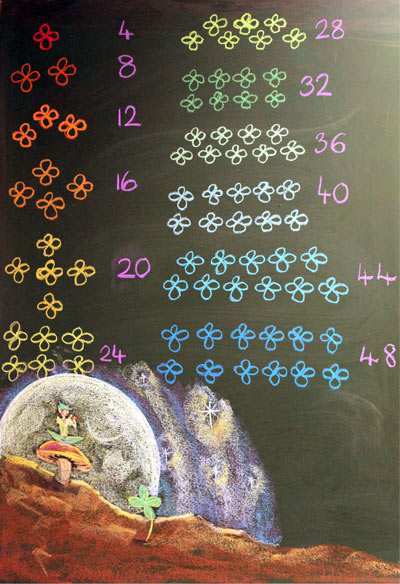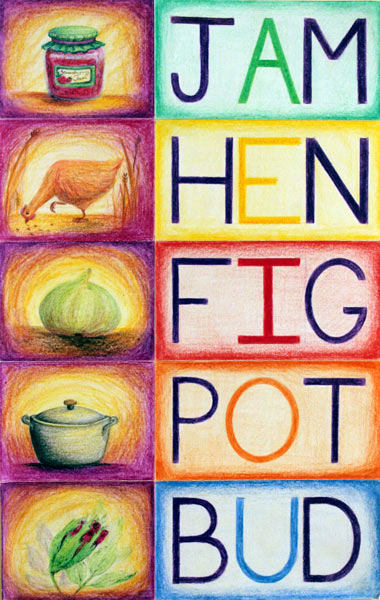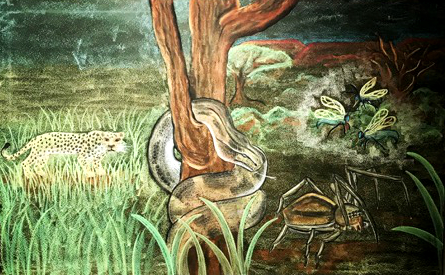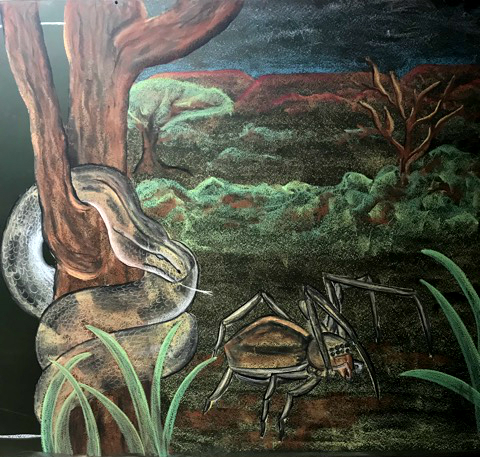Class 2 can truly be called year of animals and saints. The curriculum allows for the juxtaposition between the foibles of the animals and the redemptive and good qualities of the saints to be explored. While the children in Cass 1 still experience the world as a unified whole, the Class 2 child becomes inwardly aware of duality in the world. They begin to notice in themselves and others, contrasting qualities such as goodness and mischievousness. The stories of saints and animal fables give a vivid picture of the opposing feelings the children are experiencing. The stories are worked with in such a way that the children are afforded the opportunity to inwardly make moral choices for themselves.
Much of the first term language lessons are spent learning the lower case. We do this by telling a story accompanied by a board drawing which grows bigger every day to include the new letters learned. The children practice these letters, in their unlined A3 Main Lesson books. Although guided, each child takes responsibility to keep their writing straight and to make sure that the letters are well proportioned. A typical language main lesson in Class 2 would start with the teacher telling a story. The children then draw a picture of the story in their Main Lesson books. Apart from developing drawing skills and creating a beautiful book, the children’s capacity for visualization and memorization is strengthened by recapitulating the story through image. On day two the story is recalled by the children, they may act out some of it or simply tell it as they remember it. The teacher finally writes sentences about the story on the chalk board which the children then copy into their books. Throughout we continue with our phonics program, introducing blends and digraphs and building sight vocabulary.
In the second half of the year we progress from reading exclusively our own writing, to a graded reading scheme. To start them off some parents may volunteer to do paired reading during one lesson per week. A printed class reader is introduced at this stage and we read this all together or individual children volunteer to read to the class.
An integral part in the language curriculum remains verbal which underlies development of speaking and listening skills through the learning and performing of poems, verses and plays.
The Class 2 the mathematics is a continuation of what was introduced in Class 1. Much time is spent on practicing the four mathematical processes of adding, subtracting, multiplication and division. We practice both written and mental maths, learning ladders and timetables to at least the six times and including the ten times table. We continue developing our understanding of place value and introduce story sums. A large part of the mathematics curriculum in Class 2 is taken up by exploring the beauty in rhythmical patterns created by numbers in certain relationships to each other. This opens up an unexpected dimension to mathematics which gives children great enjoyment and a sense of wonder.
On-going throughout their Primary School career children will paint, draw and do form drawings, developing an artistic capacity essential to the development of a well- rounded human being.
Both language and number work is taught once a term in a three week Main lesson block. While the first week of term is usually spent on a form drawing or painting main lesson, the last week or two of term is spent making crafts relating to the particular festival celebrated. Subjects not taught in a main lesson block such as Handwork, Gardening, isiXhosa, Afrikaans, Music and Eurythmy are taught continually throughout the year.




